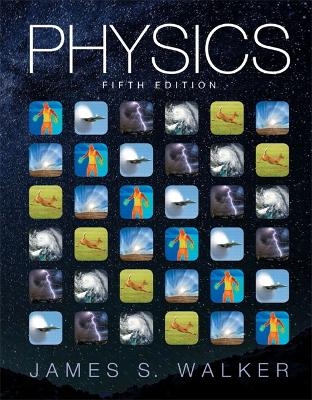
Scalable Quantum Computers – Paving the Way to Realization
Wiley-VCH Verlag GmbH (Hersteller)
978-3-527-60318-3 (ISBN)
- Keine Verlagsinformationen verfügbar
- Artikel merken
Quantum computers hold the promise of solving problems that would otherwise be intractable with conventional computers. Some prototypes of the simplest elements needed to build a quantum computer have already been implemented in the laboratory. The efforts now concentrate on combining these elements into scalable systems. In addition, alternative routes to creating large scale quantum computers are continuously being developed. This volume gives a cross-section of recent achievements in both the theory and the practical realization of quantum computing devices.Samuel L. Braunstein (Reader, University of Wales, Bangor, and editor of the book "Quantum Computing - Where do we want to go tomorrow") and Hoi-Kwong Lo (Chief Scientist, MagiQ Technologies, Inc., NY) invited experts across many disciplines involved in the development of quantum computers to review their proposals in a manner accessible to the non-expert. Breaking with tradition, this book not only contains proposals, but a set of independent expert evaluations of these ideas as well.
As a by-product, this volume facilitates a comparison between the widely varying disciplines covered, including: ion traps, cavity quantum electrodynamics, nuclear magnetic resonance, optical lattices, quantum dots, silicon systems, superconductivity and electrons on helium.
Herausgeber Professor Samuel L. Braunstein Reader at the School of Informatics, University of Wales, Bangor. Member of UK Quantum Optics & Computation Networks. Member of the ESF Quantum Information Theory program. Expert in the field of Quantum Optics und Quantum Computing. Consultant for the journal "Fortschritte der Physik". Dr. Hoi-Kwong Lo Senior Vice President Research and development of MagiQ Technologies, Inc., New York; Hoi-Kwong Lo was born in Hong Kong in 1967. He obtained his B. A. in Mathematics (Triple First Class Honors) from Trinity College, Cambridge University, UK in 1989 and his M.S. and Ph.D. in Physics from the California Institute of Technology, Pasadena, USA in 1991 and 1994 respectively. After getting his Ph.D., he became a Member of the Institute for Advanced Study, Princeton, NJ. From 96 to 99, he was with the Hewlett-Packard Laboratories, Bristol, UK, first as a Research Consultant and then as a Senior Member of Technical Staff. He is currently Senior Vice President, Research and Development of MagiQ Technologies, Inc. This is the first quantum computing start-up with a stated goal of building a "quantum Internet." His current research interests include quantum computation and also cryptography. He is one of the persons who have demonstrated the impossibility of a whole class of quantum cryptographic schemes including quantum bit commitment. This result has been widely reported in the scientific press including Science and Science News. Recently, in a paper in "Science", he and his colleague have given a rigorous proof of the security of quantum key distribution, the most well-known application of quantum cryptography. This result has been reported in a "perspectives" article in Science. He has co-edited a textbook on quantum computation and information, which has been favorably reviewed in Nature, and he is the main inventor of a US patent.
Voyaging in Hilbert Space (by F. Wilczek) The Physical Implementation of Quantum Computation (by D. DiVincenzo) Schemes of quantum computations with trapped ions (by J. F. Poyatos, J. I. Cirac, and P. Zoller) Ion trap quantum computing with warm ions (by G.J. Milburn, S. Schneider and D.F.V. James) Ion trap quantum computer with bichromatic light (by A. Soerensen and Klaus Moelmer) Quantum Computation with hot and cold ions: An assessment of proposed schemes (by D. F. V. James) Quantum computing with trapped ions, atoms and light (by A. M. Steane and D. M. Lucas) Implementations of quantum computing using cavity quantum electrodynamics schemes (by P. Grangier, G. Reymond and N. Schlosser) NMR base Quantum Information Processing: Achievements and Prospects (by D. G. Cory, R. Laflamme, E. Knill, L. Viola, T. F. Havel, N. Boulant, G. Boutis, E. Fortunato, S. Lloyd, R. Martinez, C. Negrevergne, M. Pravia, Y. Sharf, G. Teklemariam, Y. S. Weinstein and W. H. Zurek) NMR Quantum Computation: a Critical Evaluation (by J. A. Jones) Quantum Computing with Neutral Atoms in an Optical Lattice (by I. H. Deutsch, G. K. Brennen and P. S. Jessen) Quantum computing with trapped particles in microscopic potentials (by T. Calarco, H.-J. Briegel, D. Jaksch, J.I. Cirac and P. Zoller) Quantum Computing Using a Neutral Atom Optical Lattice: an Appraisal (by G. J. Milburn) Spintronics and Quantum Dots for Quantum Computing and Quantum Communication (by G. Burkard, H.-A. Engel and D. Loss) Quantum computation using quantum dot spins and microcavities (by A. Imamoglu) The Spin Degree of Freedom in Quantum Dots (by K. Ensslin) Quantum gates by coupled quantum dots and measurement procedure in field-effect-transistor structure (by T. Tanamoto) Silicon-based Quantum Computation (by B. E. Kane) Josephson-Junction Qubits (by Y. Makhlin, G. Schoen and A. Schnirman) Quantum Computing and Quantum Measurements with Mesoscopic Josephson Junctions (by D. V. Averin) Superconducting Circuits for Quantum Computing (by T. P. Spiller) Quantum Computing Using Electrons Floating on Liquid Helium (by M. I. Dykman and P. M. Platzman) Could we Quantum Compute with Electrons on Helium? (by M. J. Lea, P. G. Frayne and Yu. Mukharsky) On the possibility of quantum computation based on photon exchange interaction (by T. Opatrny and G. Kurizki) Reply to a review of photon-exchange interactions by Opatrny and Kurizki (by J. D. Franson) Sample Chapter
| Erscheint lt. Verlag | 28.1.2005 |
|---|---|
| Verlagsort | Weinheim |
| Sprache | englisch |
| Maße | 130 x 250 mm |
| Gewicht | 666 g |
| Themenwelt | Naturwissenschaften ► Physik / Astronomie |
| ISBN-10 | 3-527-60318-2 / 3527603182 |
| ISBN-13 | 978-3-527-60318-3 / 9783527603183 |
| Zustand | Neuware |
| Haben Sie eine Frage zum Produkt? |
aus dem Bereich


